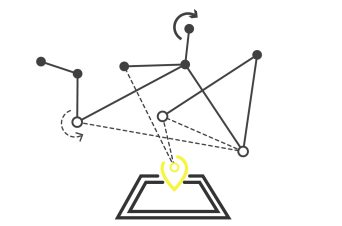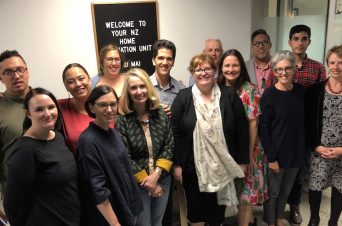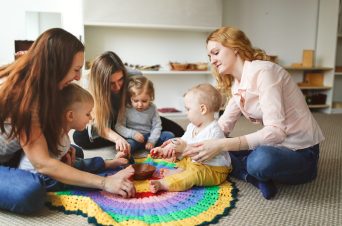
How Social Innovation is Deeply Māori
blog | 04 Dec 2018
In this article, Kataraina Davis, one of our New Zealand based Project Leads, reflects on her journey into social innovation.
This article was originally published on the Innovate Change website, prior to the merge between Innovation Unit and Innovate Change. It is the first in a three-part blog series on the deep connections between the tikanga (customs) and practice of social innovation and Te Ao Māori (the Māori world).
Social innovation is the process of designing, developing and growing ideas, products, services, strategies and organisations that work to address unmet social needs.
It is not just about reaching an outcome, it’s also about developing capability within organisations, communities and individuals to better respond to the social challenges they face now and in the future. Co-design is both a method and a mindset. It is a way of gathering lots of different perspectives, insights and experiences to work together toward better solutions.
Ko Maungakiekie te maunga
Ko Waitemata te moana
Ko Māhuhu ki te rangi te waka
Ko Orākei te marae
Ko Tumutumuwhenua te whare tupuna
Ko Te Taou te hapū
No reira, ko Ngāti Whātua te iwi
Ki te taha o tōku Pāpā
Ko Wiremu Piriniha Reweti rāua ko Kane Nepu Paora ōku mātua tupuna
Ki te taha o tōku Māmā
Ko Rakau Mohi Pita rāua ko Tui Kataraina Hetaraka ōku mātua tupuna
Ko Wiremu Henare Toka Davis rāua ko Jean Davis ōku mātua
Ko Kataraina Davis tōku ingoa.
When I am asked, “what do you like about social innovation or co-design, and what is its value for Māori?”, after being in this space for close to two years, my answer is this:
Māori have been innovating for generations. History shows, there was a need to work together, be creative, take risks, and be comfortable in ambiguity to ensure the continuation of our people – Ngāi Māori. Māori are innovating everyday and social innovation allows and encourages us to live and breathe our daily practices while addressing social challenges for the betterment of our people.
Social innovation is articulated through this Māori proverb.
“E hara taku toa i te toa takitahi, engari he toa takimano, takitini”
Success is not the work of one, but the work of many.
In October 2015, I found myself at a crossroads. My beautiful father, who I lived with and looked after, had just passed. I questioned my purpose and what steps to take for my own development, while still providing for my family. With the encouragement from my whānau , close friends and colleagues, I decided to take the risk, after 12 years, to move from my beloved sexual health promotion post with Auckland Sexual Health Service, and apply for the Māori Project Lead role at Innovate Change.

Social innovation was a brand new space for me, or, so I thought. I thought I knew nothing. Prior to my interview and first step into the social innovation space, I rapidly immersed myself into everything I could find with the hope to understand just enough. To try and compare the knowledge I had from my own life experiences, te reo Māori me ōna tikanga, and from working in a health system. I looked for examples of where social innovation might align with me, to articulate what this new space was. I was attempting to learn a new language, in a very short space of time. I found a multitude of social innovation concepts, methodologies, models and practises that aligned with what I connect to most – my Māoritanga.
To build this picture, I will compare 5 key Māori values, principles, or ways of being that are brought to life by co-design.
Rangatiratanga (noun) chieftainship, right to exercise authority.
“Hapaitia te ara tika pumau ai te rangatiratanga mo nga uri whakatipu”.
Foster the pathway of knowledge to strength, independence and growth for future generations.
Social innovation allows for those who will benefit from the result of a social innovation process to achieve autonomy over their own lives and what is designed by them and for them. This is achieved through allowing all voices to be heard, and all people to be experts in their own lives, through a commitment to participatory practice. A commitment to creativity that enables agility throughout a process, leaving room to adapt quickly and increase accessibility to participate.
Manaakitanga (noun) hospitality, kindness, generosity, support – the process of showing respect, generosity and care for others.
“He tangata takahi manuhiri, he marae puehu”
A person who mistreats his guest has a dusty Marae.
Social innovation enhances mana – it validates and gives value to all stories shared with us. Co-design workshops are built on showing manaaki through hospitality. Ensuring everyone is comfortable; privacy and confidentiality is maintained; transparency is encouraged and activities or ways of working are accessible.
Ako (verb) to learn, study, instruct, teach, advise.
“Kei a tatou anō te ara tika”
The answers are within us.
Social innovation encourages a continuous cycle of learning, asking the question, “do we really know enough?”. It calls for innovation, creativity, and curiosity through:
- Kōrero (Talking)
- Whakarongo (Listening)
- Wānanga (Gatherings to learn or forums)
- Uiui (Questioning)
It requires questioning and listening with intent to fill your 3 kete of knowledge, using multiple methods of co-design to allow for all who will benefit from what is designed, to participate.
Whanaungatanga (noun) relationship, kinship, sense of family connection.
“He reo e rangona, engari he kanohi kitea”
A voice may be heard, but a face needs to be seen.
Co-design relies on relationships and networks. To begin with, there is a need to build enduring relationships without intent, having a cups of tea, investing time and resource into your relationships. Secondly, while co-design can be rapid and the resource of time is not always freely available, there is a still a commitment to giving the time to build the rapport needed to work meaningfully together.
And lastly;
Tangata Whenuatanga (noun) indigenous people – people born of the land.
Co-designing in Aotearoa requires a genuine and active commitment to reducing inequality for tangata whenua of Aotearoa – my people, Ngāi Māori. How might we enable ways for Māori to participate in processes from research phase through to the implementation of a ‘thing’? How might we always honour Te Tiriti o Waitangi in our way of being, and practice? Who do we know that can help us to build capability in this area?

At Innovation Unit here in New Zealand I hear these questions being asked constantly, I see our daily commitment to being a bi-cultural agency, and therefore I feel our growth as a team, and organisation towards achieving cultural competency. Acknowledging that this is an everlasting journey. In part two of this series I will illustrate how Innovation Unit works towards decreasing inequality for and with Māori, and the work that takes place to build our capability around bi-cultural practice.
I believe social innovation embodies my first whakatauki:
“E hara taku toa i te toa takitahi, engari he toa takimano, takitini”
Through all the values, ways of being and working mentioned earlier, social innovation and co-design acknowledges that there is a need for all to participate fully and meaningfully. These approaches generate buy in from those who participate, enabling kotahitanga (unity) and a sense of ownership to move forward together. The result is something designed with meaning and intent to serve the people we are designing for, alongside us, and always in heart and mind.
Nei ra aku mihi ki a koutou,
Kataraina

Mindsets for Social Innovation
The following mindsets for social innovation were developed by Innovate Change prior to its merge with Innovation Unit.
03 Dec 18

Merger with NZ social change agency Innovate Change
On 1 July 2018, Innovate Change will merge with Innovation Unit, a not-for-profit social enterprise that creates new solutions for thriving societies.
08 Jun 18

Harekeke: Parents for Parents
Harakeke – Parents for Parents has been enabling parents of children under five to support each other to be the best parents they can be for over two years.
25 Oct 16